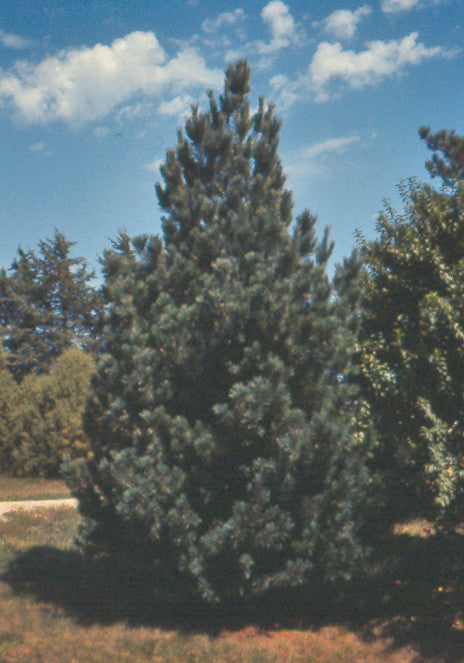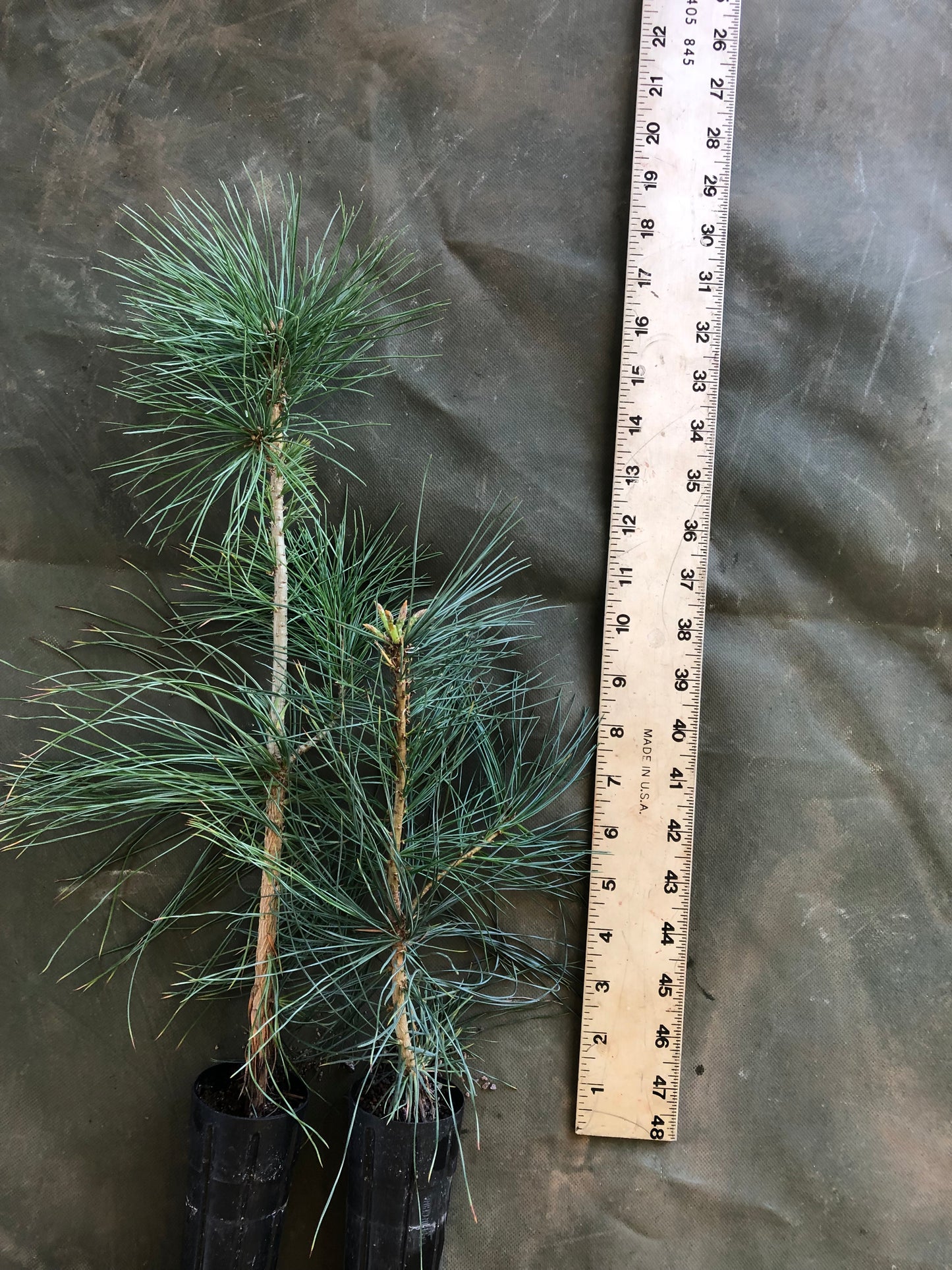Containerized Plant Material
Southwestern White Pine (Containerized)
Southwestern White Pine (Containerized)
Couldn't load pickup availability
25 plants per unit (containerized seedlings)
Pinus strobiformis, or Southwestern white pine, grows in Arizona, New Mexico and Southwest Colorado. It is not native to Kansas. This tree resembles limber pine, but its branches aren’t as heavy and its cones are longer. On its native sites, it may grow to 90 feet in height. It hasn’t been used in Kansas long enough to know how large it will grow, but its mature height probably will be 35 to 50 feet. Its growth rate is about 12 inches per year. Southwestern white pine is rather shade intolerant.
Leaves, Stems and Fruit
Southwestern white pine needles are in groups of 5, soft, dark to bluish green, 2 to 4 inches long, and tips are often finely toothed. Bark is thin, rough, and furrowed. Branches tend to be long and horizontal, and they are stiffer on young young trees than on eastern white pine. The cones are 2.8 to 9.8 inches long with reflexed, thick scales. Young trees tend to be rather dense and symmetrical and pyramidal in shape. Its mature form tends to be open and irregular.
Use
Windbreaks - This tree can be used for the evergreen tree component of windbreaks.
Wildlife Habitat - It provides some nesting, loafing, roosting cover and winter protection for many wildlife species. The seeds are palatable to small mammals and birds.
Christmas Trees - Southwestern white pine can make a beautiful Christmas tree.
Adaptation and Soil
Southwestern white pine is adaptable statewide with low to moderate moisture requirements. It grows are a broad range of soils, but may struggle on poorly drained sites.
Spacing
Southwestern white pines are spaced 8 to 12 feet within a row and 12 to 18 feet between rows.
Culture
Two-year-old bare-root and container-grown seedlings are used in conservation plantings. Typically the seedlings grow very little in height until the second or third year. During the establishment period, supplemental watering and control of competing vegetation will aid survival and early growth. Large, fast growing deciduous trees should be spaced far enough (20 to 40 feet) between rows to prevent shading the pines. Southwestern white pine may require more TLC the first couple of years than Austrian pine or Ponderosa pine.
Pests
White pine blister rust is a problem in Southwestern white pine’s native range, but it is not considered a problem in Kansas. It is unknown how serious pine wilt will be on this tree. Pine wilt does occasionally kill Eastern white pines, but since Southwestern white pine is considerably more drought tolerant, it is believed that it will be somewhat more resistant.





